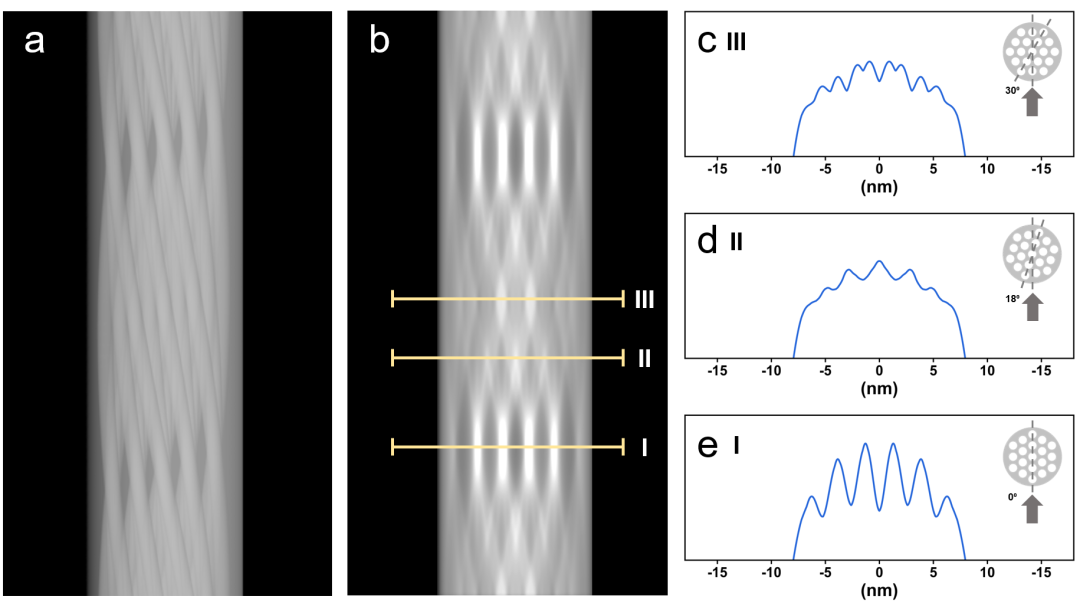
hotline:
17715390137
Tel/Wechat:
18101240246 (Technology)
0512-68565571
Email:mxenes@163.com (Sales Engineer)bkxc.bonnie@gmail.com
Scan the code to follow or search the official account on WeChat:
2D Materials Fronrier After paying attention,
click on the lower right corner to contact us,
Enter enterprise WeChat.
Professional Services Online

Ordered porous materials have been widely used in the field of catalysis due to their abundant pore structures. Polyacid clusters are also favored in the field of catalysis due to their unique redox properties. Porous materials loaded with poly acid clusters have emerged in photocatalysis due to the combination of the excellent catalytic performance of poly acid and the unique structural characteristics of microporous materials.
Recently, Professor Wang Xun of Tsinghua University assembled helical microporous nanorods (hmnrs) based on poly acid clusters. The nanorods have the characteristics of both polyacid clusters and microporous materials, and show excellent photocatalytic performance. A simple hydrothermal method for one-step synthesis avoids complex loading methods.

There are one-dimensional helical channels in hmnrs. The one-dimensional channels are planar hexagonal in the nanorods. The distance between adjacent channels is 2.7 nm, and the diameter of channels is less than 1.7 nm. Due to the existence of helical channels, nanorods exhibit parallel stripes under TEM. The results of structural simulation show that the stripe of hmnrs in TEM image comes from the parallel spiral channels in the nanorods. When the one-dimensional spiral channels overlap in the direction of electron beam, a series of obvious peaks and valleys will appear in the results of ED X-ray scanning, and corresponding fringes will appear in TEM and stem images; Because the one-dimensional channel rotates along the axis, the projection distribution of the channel changes accordingly; Due to the planar hexagonal stacking of one-dimensional helical channels in nanorods, the same stripe will appear again after one-dimensional channels rotate 60 ° along the axis.

Hmnrs exhibit reversible photochromic properties. Hmnrs changed from white to blue after illumination, and the blue produced by illumination faded rapidly after oxygen was introduced. Inspired by this, the photocatalytic activity of hmnrs for toluene oxidation was explored. The conversion rate of hmnrs was 2254 μ The conversion rate was 50 times higher than that catalyzed by poly acid cluster. The apparent quantum efficiency (AQE) is 18%. By controlling the reaction time, the selectivity of the catalyst to benzaldehyde can reach 94%. The stability of the catalyst is outstanding, the composition and morphology of hmnrs remain after photocatalytic reaction, and the performance of hmnrs does not decrease significantly in the cycle test.
This material effectively combines the excellent catalytic properties of polyacids with the characteristics of microporous materials, and is expected to be applied in the catalytic fields such as toluene oxidation catalyzed by polyacids.

This information is from the Internet for academic exchange only. If there is any infringement, please contact us to delete it immediately

| Reminder: Beijing Beike New Material Technology Co., Ltd. supplies products only for scientific research, not for humans |
| All rights reserved © 2019 beijing beike new material Technology Co., Ltd 京ICP备16054715-2号 |